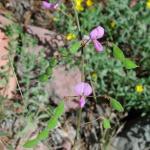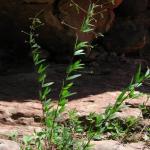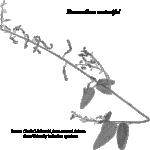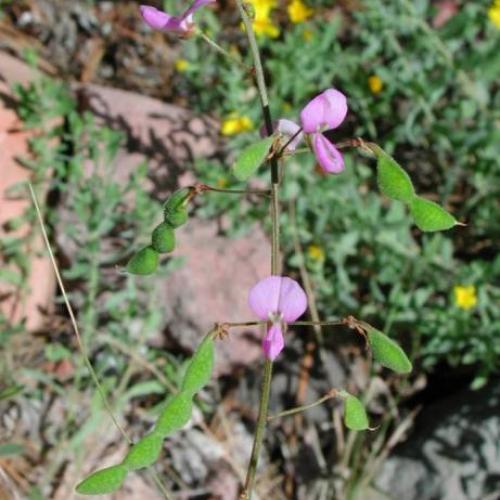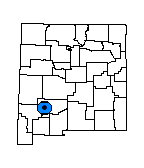Description
Perennial; stems erect or ascending, clustered, 3-9 dm long, glabrate or strigose to inflorescence; petioles 1-3 cm long; leaves trifoliolate; leaflets oblong-lanceolate, the terminal longest, to 3-6 cm, generally about 1 cm wide, 4-5 times longer than wide, glabrous to slightly strigose above, somewhat pale below and either glabrous or strigose on nerves; inflorescences axillary and terminal, elongating to 5-30 cm in fruit; pedicels spreading; calyx about 2 mm long; corolla about 5 mm long, purple; stamens with filaments united into a tube; fruits stipitate for 1-2 mm, segmented (fruits are loments), crenate above, moderately notched below, sometimes twisted, segments 2-5, each 5-6 mm long, surface with fine, stiff, hooked hairs. Flowers August to October.
Similar Species
Desmodium metacalfei is similar to D. cinerascens, which occurs in southeastern Arizona, but whose leaflets are villous below. The trifoliolate-leaves of Desmodium are similar to those in Phaseolus, whose stems are twining. Other trifoliolate sympatric genera, Cologania and Galactia, as well as Phaseolus, all have diadelphous stamens (united by their filaments into two unequal sets), whereas D. metcalfei has monadelphous stamens.
Distribution
New Mexico, Grant and Sierra counties; Arizona, Cochise, Coconino, Gila, Pinal, Santa Cruz, and Yavapai counties; Mexico, Sinaloa.
Habitat
Rocky slopes and canyons in grasslands, oak/piñon-juniper woodlands, and riparian forests; 1,310-2,000 m (4,000-6,500 ft).
Conservation Considerations
Current land uses apparently pose no threat to this species. Additional field searches are needed to determine the rarity of this plant.
Important Literature
Isely, D. 1998. Native and naturalized Leguminosae (Fabaceae) of the United States (exclusive of Alaska and Hawaii). Monte L. Bean Life Science Museum, Brigham Young University, Provo, Utah.
Kearney, T.H. and R.H. Peebles. 1960. Arizona flora, second edition with supplement. University of California Press, Berkeley.
Rose, J.N. and J.H. Painter. 1905. Some Mexican species of Cracca, Parosela, and Meibomia. Botanical Gazette 40:143-146.
Wooton, E.O. and P.C. Standley. 1915. Flora of New Mexico. Contributions from the U.S. National Herbarium 19:372.

